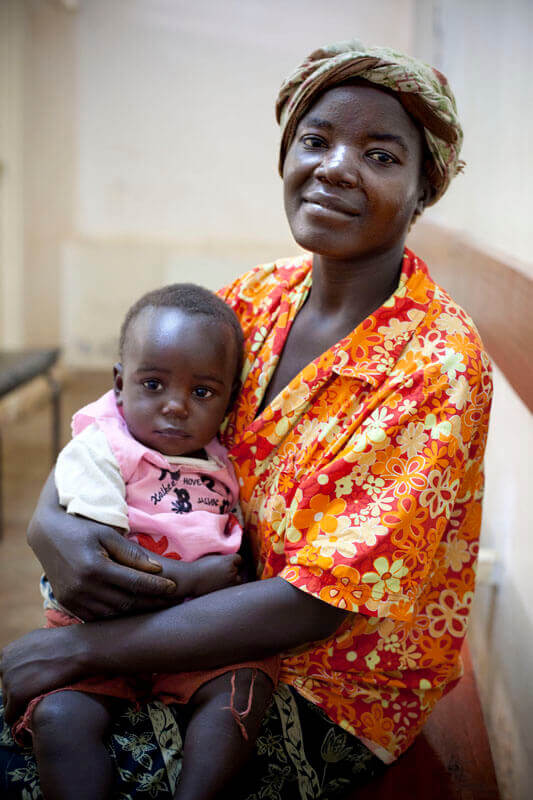Margaret McGlynnInternational Vaccine Institute
Margaret McGlynn is the President and CEO of the International Vaccine Institute, a nonprofit inter-governmental organization that works to develop vaccines against infectious diseases.
In this guest post, Margie McGlynn, president and CEO of the International AIDS Vaccine Initiative (IAVI), Zeda Rosenberg, chief executive officer of the International Partnership for Microbicides (IPM), and Renate Baehr, executive director of DSW (Deutsche Stiftung Weltbevoelkerung) mark International Women’s Day with a call for continued research to develop new women’s health tools.
On this day honoring the political, social, and economic contributions women have made worldwide, nearly 2,000 women will die of AIDS and 790 will perish in pregnancy or childbirth. If we wish to truly advance the health and rights of women globally, we must give them the tools they need to protect their own health. Yet, while the benefits of investing in women—and their health in particular—are well-established and far-reaching, less progress has been made over the past decade toward attaining Millennium Development Goals that address women’s health and gender equality than virtually every other goal.
HIV is a case in point. In the regions hardest hit by the AIDS pandemic, such as sub-Saharan Africa, women bear a disproportionate burden of HIV, accounting for six out of every 10 new infections. A unique combination of factors, having as much to do with biology as with gender inequality, contribute to women’s increased vulnerability.

Fortunately, researchers have in recent years made remarkable progress toward developing tools for HIV prevention that could empower women to protect themselves from the virus. A number of such products and strategies are under development today, including microbicides, AIDS vaccines, multi-purpose prevention technologies (MPTs) and the use of antiretroviral drugs (ARVs) as pre-exposure prophylaxis (PrEP).
Take, for example, IPM’s monthly vaginal ring that is currently in the late stages of clinical evaluation. The device slowly releases the ARV dapivirine to prevent HIV. Another product that has already been shown to be partially effective, a microbicide gel containing the ARV tenofovir that is used around the time of sex, is now being tested in a confirmatory trial. And though the latest results from the VOICE trial found that PrEP did not work in that study due to low adherence, a number of other studies have demonstrated that if used consistently, ARVs can do much to prevent HIV.
Further, long-acting preventive tools like the dapivirine ring could help address the challenge of adherence for women. IPM and others are also developing MPTs that slowly release ARVs along with a contraceptive to prevent HIV and unintended pregnancy—both leading causes of death for women worldwide.
Researchers have also made significant strides toward the development of preventive HIV vaccines. A trial conducted in Thailand four years ago establishes hope that HIV can be prevented by vaccination. Vaccine design too is advancing apace. Scientists around the world have isolated scores of broadly neutralizing antibodies to HIV, uncovering clues to the design of broadly effective vaccines against the highly variable virus.
Recent modeling by IAVI suggests that even a partially effective HIV vaccine could significantly reduce the number of new infections among women, if it were deployed in the context of expanded prevention and treatment programs. These models suggest that a vaccine with 50 percent efficacy given to 30 percent of the adult population in low- and middle-income countries would prevent 2.8 million infections in women over 10 years.
Vaccines, microbicides and other new preventive technologies could empower women to protect their own health because they could be used discreetly, without the need for negotiation with their sexual partners.
Taken together, these new tools and measures could—if deployed with existing methods of HIV prevention—eventually end the AIDS pandemic. Until then, preventing HIV and supporting family planning would improve the health and economic well-being of entire families and advance key development goals. When women are healthy, they have more opportunities for education and employment, which in turn strengthens communities. A paper commissioned by DSW recently reported, for example, that the promotion of HIV prevention and sexual and reproductive health research can help countries make gains toward poverty reduction.
This International Women’s Day, we call on the global community to recommit to investing in new preventive tools and health technologies for women. The health of women is, after all, essential to the well-being and economic stability of not only the women themselves and their families—but of entire nations.